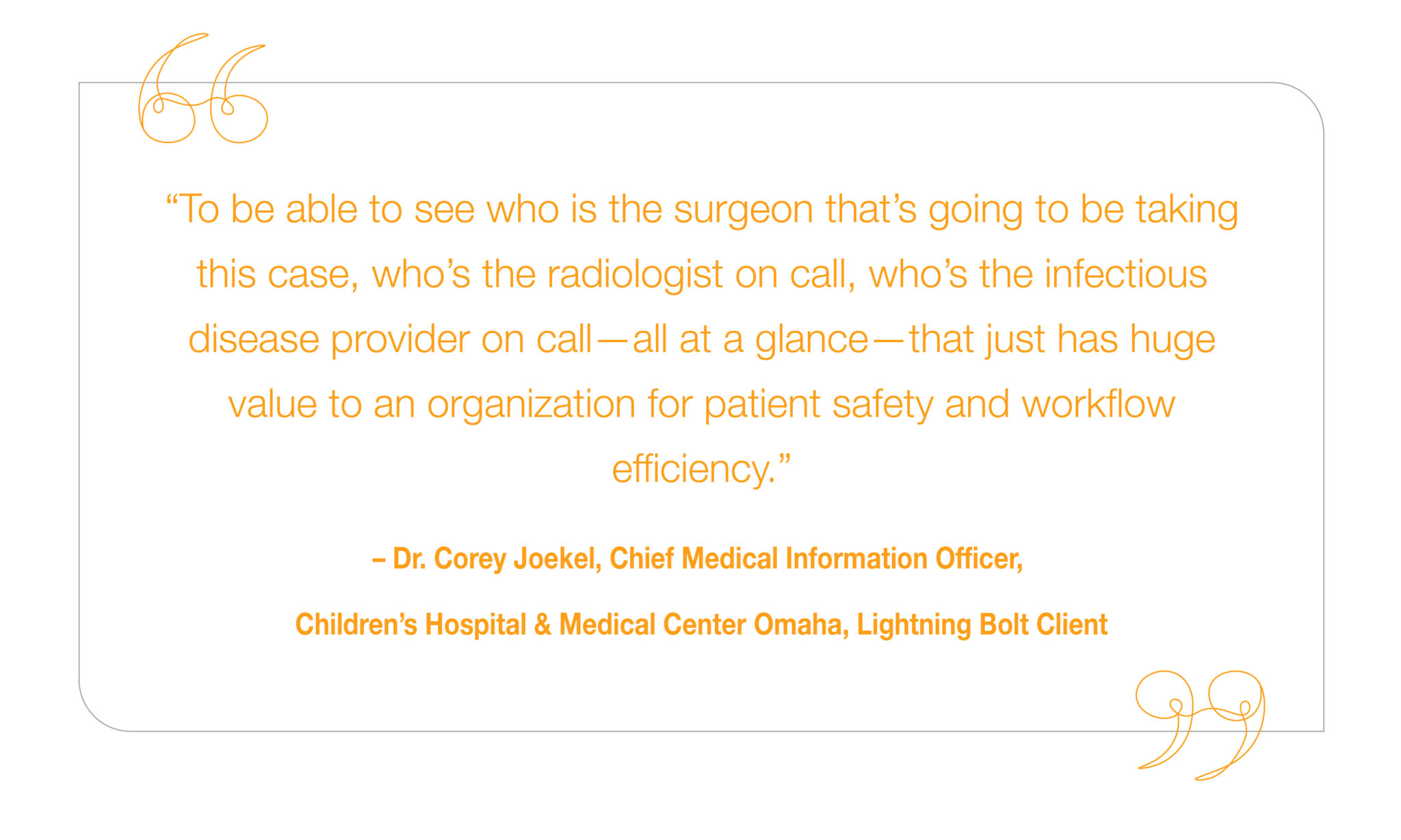Live Session
A Roadmap for Change Management Projects
Register NowTABLE OF CONTENTS
Provider schedule visibility—or lack thereof—has broad impacts on various aspects of patient care. Two top areas that can be improved by making schedules more visible are patient safety and provider satisfaction.
A review from the Joint Commission revealed that communication failures are at the root of more than 70% of sentinel events.1 Often, lapses in clinical communication are caused by the inability of care team members to locate and contact the correct provider, a problem exacerbated by siloed and outdated scheduling systems. When different department call schedules are accessed in different locations across the organization, and providers are expected to go through different processes for each department, dangerous communication delays are almost inevitable.
A study by the Agency for Healthcare Research and Quality refers to the time care team members spend attempting—but failing—to contact the correct provider as “problematic time.” According to the study, many communication events include time spent searching for information, identifying the appropriate provider, or searching for accurate contact information. On average, problematic time consisted of anywhere from 10-40% of total communication time.3 To eliminate problematic time, schedules must make it easy to locate and contact the correct provider quickly.

Organizations looking to improve speed to care and reduce medical errors should look for one digital scheduling solution that offers up-to-date schedules and provider contact information for all departments at the touch of a button. An accessible solution will also integrate real-time schedules with other essential systems such as the EHR, call center software, and clinical communication and collaboration solutions.
Modern provider schedules that are centralized, visible, and always current make connecting with the right provider much quicker and easier, eliminating delays and streamlining patient care.
Inefficient processes for locating the on-call provider can be a huge source of dissatisfaction for physicians, care team members, and administrators, contributing to increased turnover.3 A lack of schedule transparency is a frustrating issue that inhibits your staff’s perception of shift fairness, impedes their ability to collaborate quickly, and brings down their overall satisfaction at work.
A provider who cannot access a full view of the schedule is more likely to get the misconception that a coworker is getting “better” shifts than one who can easily pull up the full team schedule. Perceived unfairness can lead to frustration, friction, and dissatisfaction. As provider dissatisfaction spreads, schedulers can become overwhelmed with schedule complaints and shift change requests. In the absence of a scheduling solution that is easy to access, edit, and share, schedule changes increasingly pull schedulers away from other important tasks.
The vicious cycle repeats itself in teams that lack schedule visibility, leading to more burnout and turnover, and with each cycle, the impact gets heavier and heavier. With the price to replace a physician ranging from $500,000-1 million,4 turnover can cost healthcare organizations hundreds of thousands—and sometimes millions—of dollars each year. Investing in better provider scheduling can save big money in the long run.
Ensuring provider shift and on-call schedules are easily accessible across your organization can dramatically increase both patient safety and provider satisfaction by improving healthcare operations. Learn how PerfectServe’s Lightning Bolt Scheduling can drive results for your organization today.
1,2,3 National Patient Safety Goals. 2005. Joint Commission on Accreditation of Healthcare Organizations, as cited in Improving Patient Safety Through Provider Communication. Agency for Healthcare Research and Quality, Dingley C.
4 Please don’t go: ways to reduce physician turnover, Medical Group Management Association (MGMA), Sep. 20, 2018: mgma.com/data/data-stories/please-don-t-go-ways-to-reduce-physician-turnover#:~:text=According%20to%20Christine%20Sinsky%2C%20MD,costs%20by%20reducing%20physician%20turnover